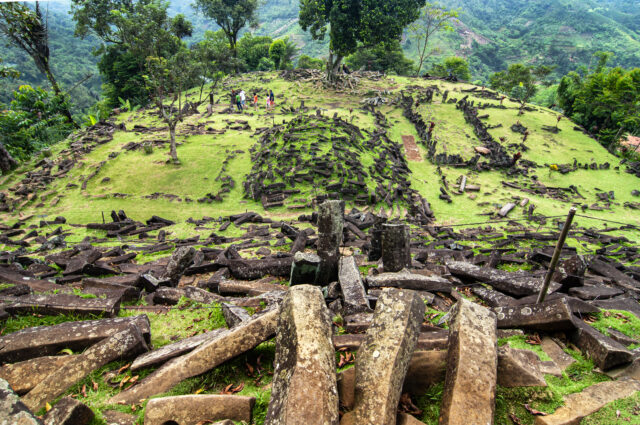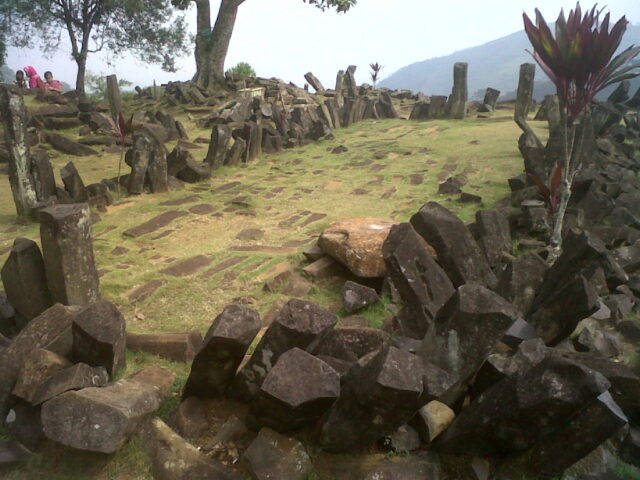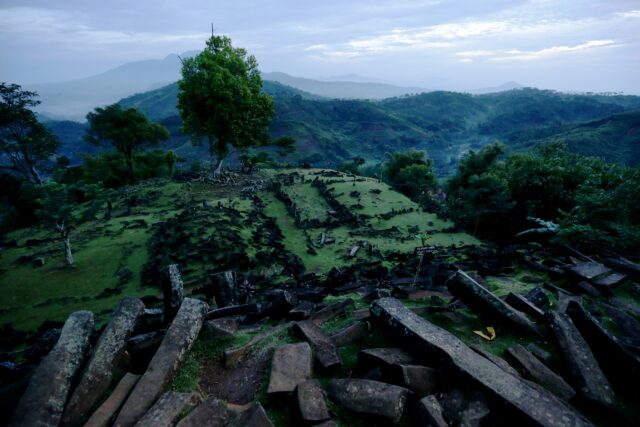A research paper claiming that an ancient site in Indonesia is home to the world’s oldest pyramid has become a major point of controversy in the academic field of archaeology. The paper states that humans built the pyramid-like structure, and if true, it would drastically alter our understanding of ancient human history. The only thing is, a lot of scholars aren’t buying it.
The paper made some serious claims
Published in 2023, the paper claims to have made some discoveries about the Gunung Padang in West Java, Indonesia. Through ground-penetrating radar surveys and radiocarbon dating, the authors say that they determined that the prehistoric “pyramid” structure dates as far back as 27,000 years ago. If true, this would make it the oldest known pyramid by a long shot, as that title is currently held by the Pyramid of Djoser, which is dated 4,700 years old.

Previous estimates dated the Gunung Padang settlements at 6,000 years old, but the authors of this paper are saying that they have compelling evidence to prove it to have multi-layer construction dating farther back with “meticulously sculpted” rocks they believe were arranged in a planned way. Their soil samples serve as evidence for such claims. However, the paper has become rather controversial in the academic field.
The paper might not have become so controversial if it weren’t for the major claims it is making that would change the way we have always understood ancient humans in this area. The authors claim that the megalithic site included a “pyramid” that was actually built by humans. This would mean that the ancient human societies we believe were living in small hunter-gatherer communities at this time, using only basic tools, were actually far more advanced and, as the paper states, “must have possessed remarkable masonry capabilities, which do not align with the traditional hunter-gatherer cultures.”
The publishers retracted the paper
Not long after its publication, the paper was met with skeptics. Bill Farley, an archaeologist from Southern Connecticut State University, said that the research provides no evidence that a human settlement existed during the last Ice Age. He explained that while the soil may have dated back to 25,000 years ago, the samples themselves do not contain any evidence of human activity. Archaeologist Flint Dibble from Cardiff University said, “I’m surprised [the paper] was published as is,” given such a serious claim.

Given the massive pushback and academic criticisms the paper received, the publishers ultimately retracted the paper in March 2024. They said, “Following publication of this article, concerns were raised by third parties with expertise in geophysics, archaeology, and radiocarbon dating, about the conclusions drawn by the authors based on the evidence reported.” The retraction is largely based on one “major error.”
The publishers said, “This error, which was not identified during peer review, is that the radiocarbon dating was applied to soil samples that were not associated with any artifacts or features that could be readily interpreted as anthropogenic or ‘man-made.’ Therefore, the interpretation that the site is an ancient pyramid built 9,000 or more years ago is incorrect, and the article must be retracted.”
What other scholars are saying about their conclusions
Many leading archaeologists are questioning how such a paper even made it past peer review and into print, given the lack of evidence to support its claims. While experts can agree that there is evidence of human activity in the area, research shows that it can only be dated to the last few hundred years or so – nowhere near 27,000 years ago. Others, like Dibble, say that natural movement and weathering can sculpt the rocks they said were shaped by humans and that their “planned” placement could be explained by simply rolling down hills.

However, despite the criticisms, the authors of the paper are steadfastly defending their findings. Danny Natawidjaja, the paper’s lead author, is calling the retraction “a severe form of censorship.” They are saying the action is “unjust” and based on “unfounded claims raised by third parties who hold differing opinions and disbelieve in the evidence, analysis, and conclusions.”
There is also a political angle that has been added to the mix of the paper’s controversy. Apparently, the Indonesian government has been providing funding to establish the narrative that Gunung Padang was an ancient pyramid for more than a decade now. With the site serving as a popular tourist destination for those practicing Islamic and Hindu rituals, such a narrative helps to increase visits to the area.
More from us: Graffiti Artists Took Over These Abandoned Luxury Towers In Los Angeles
The whole ordeal has stirred up quite a bit of controversy, but as Noel Tan, a Bangkok archaeologist, told The New York Times, “It was unfortunate that the paper had to get to this stage. But it was better to be retracted than to have nothing said about it at all.”
